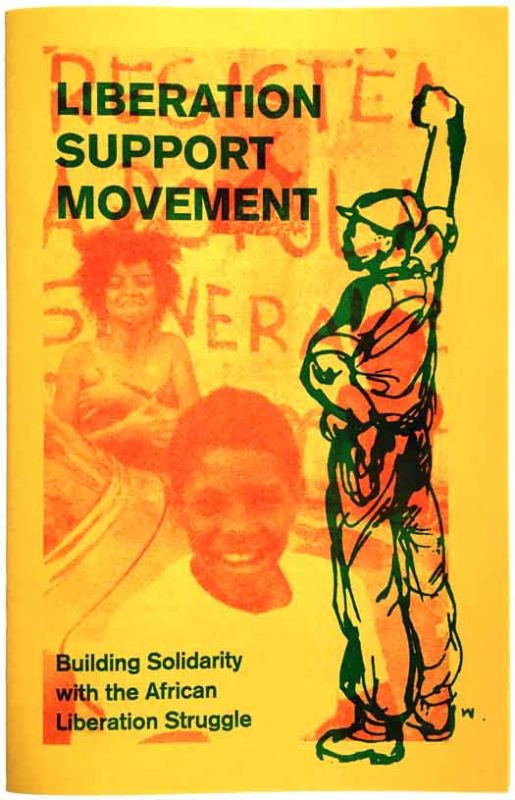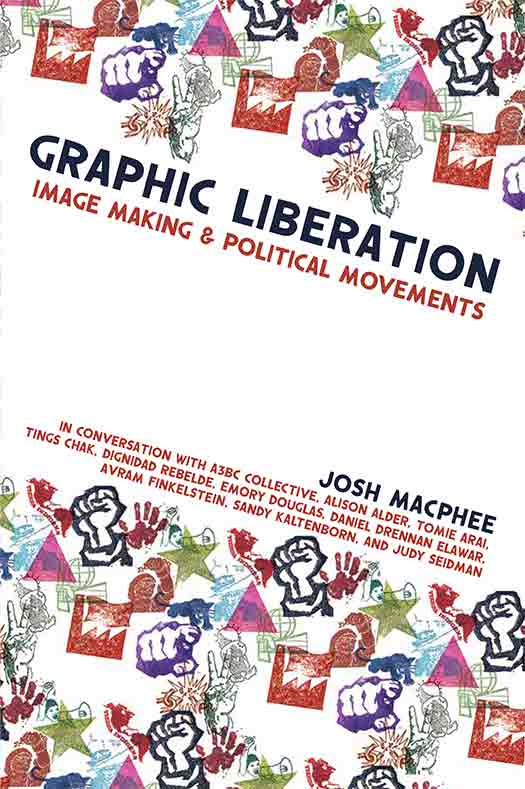Now I’m going to move into the next sub-collection of prison book covers, books about political prisoners in the U.S. Officially the U.S. does not acknowledge that it holds political prisoners (PPs), but at last count by the Anarchist Black Cross, a political prisoner support organization, their are over 50 PPs being currently held in U.S. prisons and jails. For those of you asking “What is a Political Prisoner,” here is a good definition by Bill Dunne, a revolutionary that has been in prison for over 25 years: “those persons incarcerated as a result of political beliefs or actions consciously undertaken and intended to resist exploitation and oppression, and/or hasten the implementation of an egalitarian, sustainable, ethical, classless society, predicated on self determination and maximization of all people’s freedom.”
The images to the above right is the cover of the first edition of Can’t Jail the Spirit, which for years was the main handbook and directory about and of PPs in the U.S. It contains the profiles of dozens of PPs and Prisoners of War (a sub-category of PP). At the time, in the 1980s, almost all of the PPs in the U.S. were militants from the struggles of the 1960s and 1970s, especially Black Panthers, members of the Puerto Rican Independence Movement, and white anti-imperialists. The cover of Can’t Jail the Spirit evolved over each of it’s four editions. The first has this black and white photo of prisoners in cells with red text laid on top. The next three editions had the same photograph, but in different colors (brownish red, yellow, and green, respectively) with black text on top. All editions were published by solidarity activists in small editions, independently, at C&D Printshop in Chicago. At this point they are quite rare.
There is quite a long history of PPs in the US, including early 20th century anarchists, communists, socialists, and labor organizers. Below are a couple editions of Alexander Berkman’s great personal narrative, Prison Memoirs of an Anarchist. The green cover with the strange illustration of the man riding a bird is from the dust jacket of an early (the first?) U.S. edition, which has since been republished. I have no idea what the illustration means, I read the book over 15 years ago, and I have no memory of men riding birds in it! The other cover is from the 1970 Schocken trade paperback edition, which I quite like. The horizontal bars of the title contrast and balance nicely with the horizontal bars laid over the halftoned image of Berkman’s face. The black and red are classic anarchist colors, but the duotone of the design is so effective, the political inference doesn’t overpower the cover.


Elizabeth Gurley Flynn was another leftist PP in the early 20th century. Both of these covers were published by New World Paperbacks, an imprint of the Communist Party USA, and I discussed them on this blog months back, in Judging Books by Their Covers: 12. Here’s my comments then: “It appears as if at some point the CP decided to update the style of Elizabeth Gurley Flynn’s prison autobiography: on the left is the original printing, on the right is the version available now. I guess someone, somewhere, decided that proto-psychedelic color clouds and an unflattering photo of Flynn late in life couldn’t sell books in the fast-paced publishing industry of today!”
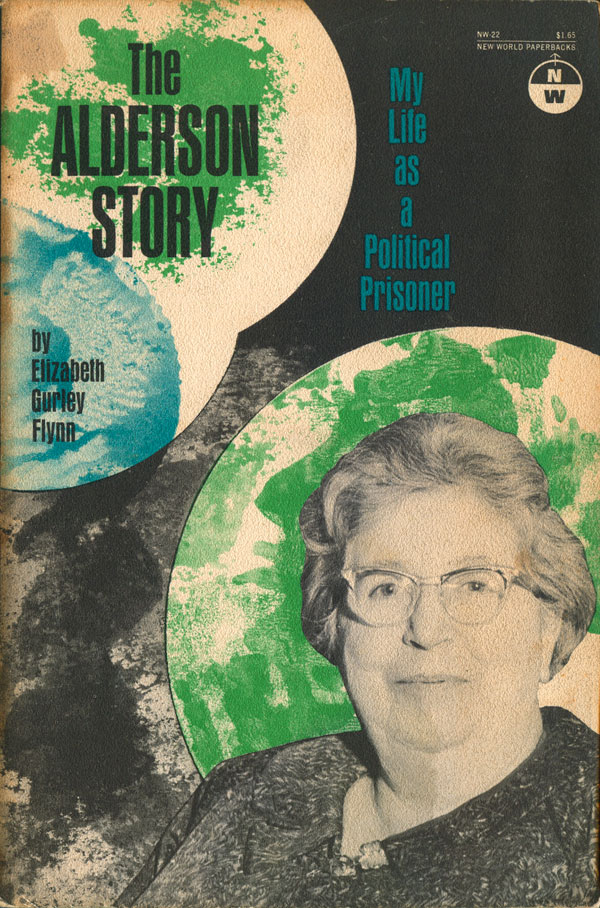

Now onwards to the more modern struggle around PPs. I’m not much of an expert, but things seemed to have slowed a bit between the 30s and 60s. The book on the left is a memoir by Barbara Deming from 1966. She was a peace activist and went to jail a number of times for civil disobedience. On the right is good introduction to the public faces of PPs from the past 45 years. Angela Davis’ arrest in 1970 for supposedly providing guns to Jonathon Jackson (who engineered a failed prison break for his brother George Jackson’s fellow Soledad prisoners—but more on that next week) was highly publicized and her face, and afro, became a national symbol for both Black resistance and state repression. This book, written by her friend Bettina Aptheker (daughter of Marxist labor historian Herbert Aptheker) and published by New World Paperbacks, connects this generation to the Gurley Flynn and her contemporaries.
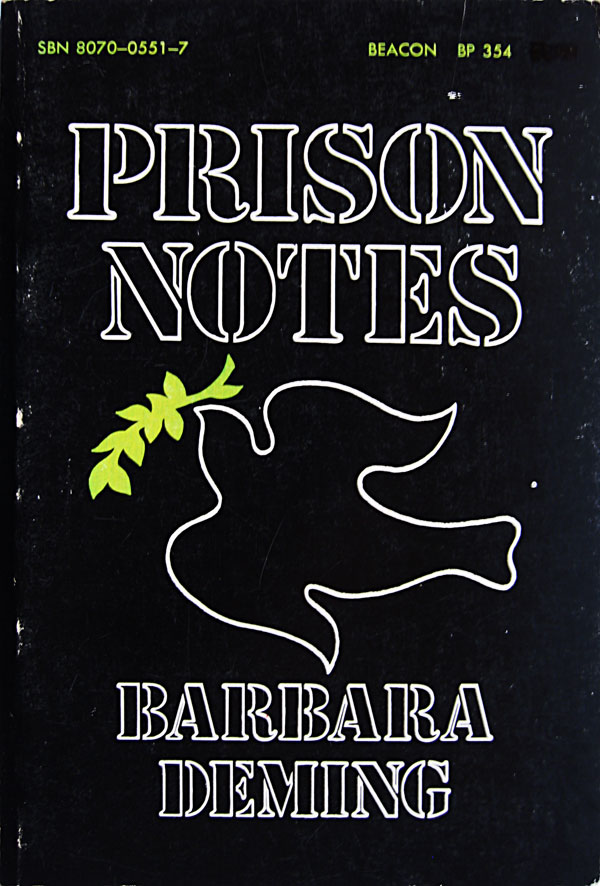
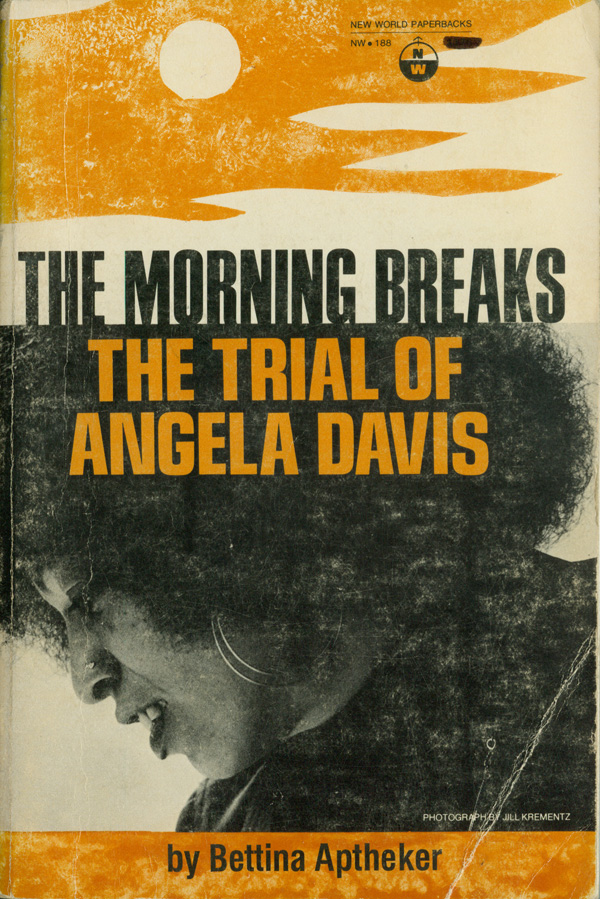
Edited while she was in jail awaiting trial, Davis’ If They Come in the Morning was an attempt to mainstream and popularize the struggle of political prisoners. The first hardback edition (left) was produced by her support committee, and the Signet pocket paperback on the right was a mass produced reprint. Both covers depend on Davis’ recognizable face and afro for their effect, on the hardback the title and name are almost pushed off the bottom of the page by the dominant image of Davis mid-speech.

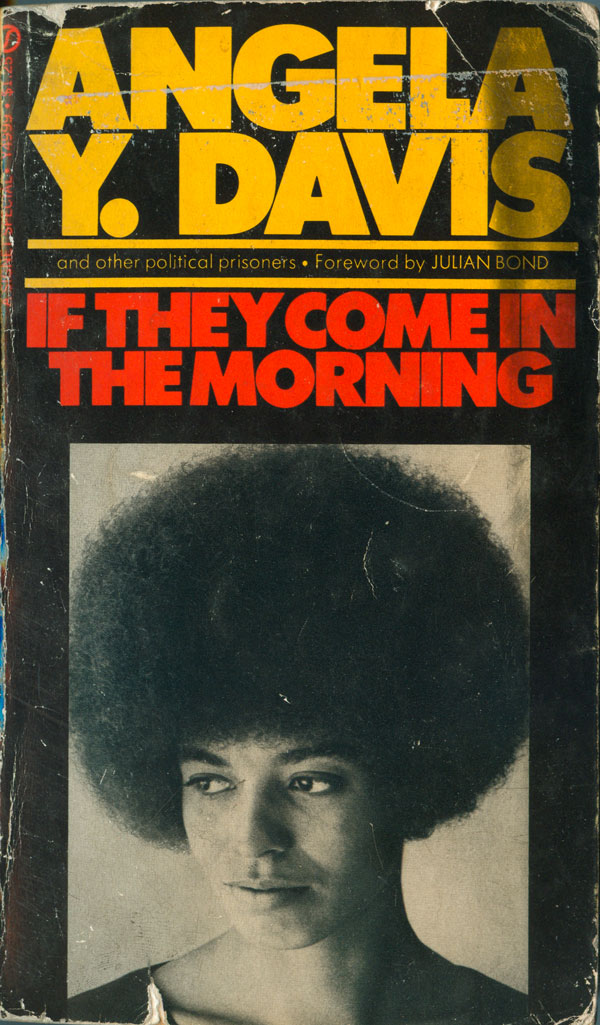
Come the 1980s and 90s, a large number of the political prisoners caught up in the repression of the revolutionary movements of the 60s and 70s were still in prison, while the movements they had taken part in were collapsing. The remnants of the movements began to focus their energy on trying to support “those left behind.” Part of that included spurring on a new academic interest in these prisoners, and a number of books starting coming out looking at the problem of political prisoners. For the most part these books chose cover designs that didn’t stray far from the prison book cover standards of bars and cells. The Harlow cover to the left goes as far as including a photo of a cell window, using the bars as a design element in the background, and literally placing bars on top and bottom of the title, Barred. No one is going to wonder what this book is about!
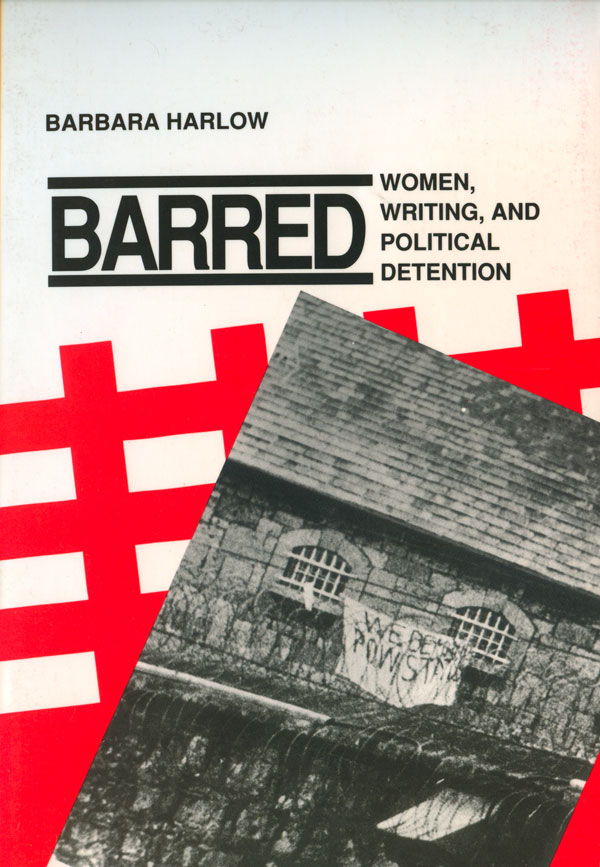

The Blunk book is a collection of more creative writings (and drawings) by PPs, and as such has a much more human feel. The illustration of the prisoners collectively pulling the morning sun into the cell (or turning it into a rope to throw out the window and climb out with!) is great, and the texture of the bricks provides a nice backdrop to the solid yellow font. The cover to the Meyer book is my addition to this collection, and the first book about political prisoners I designed the cover for. I chose a graphic from a solidarity flyer and blew it up large, colored it, and wrapped it around the cover. The lines of light flowing out of the candles are “anti-bars” in a way, creating a series of vectors shooting out, rather than holding anything in.


And finally, a couple covers that don’t fall somewhere outside the political trajectory of the rest. To the left is an old pulp paperback from the 1950s, I assume about American prisoners of war from the Korean War (or maybe even Germany in WW2—I have this book somewhere, but not sure where!). The barbed wire creates such a nice grid across the entire cover, making squares for the face, subtitle, hand, watchtower, etc…
And to the right a relatively new book about the treatment of prisoners at Guantanamo, with the bars in the ceiling creating a shadow grid that almost perfectly echoes the one on the Brainwashing cover.


Next week I’m going to focus in on the books about a specific political prisoner, George Jackson. A bibliography of all the PP books will follow the week after that.






